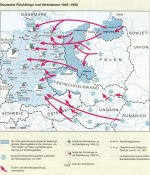Johannes
Regular Member
- Messages
- 435
- Reaction score
- 33
- Points
- 0
- Ethnic group
- Celtic/Germanic/Basque
- Y-DNA haplogroup
- I2a1
1. Subclades of R1a and R1b typical for these European language groups today:
a) Correlating with Germanic languages:
R1a Y2395 - formed around 4900 (5500-4400), TMRCA around 4500 (5100-3800) ybp: http://www.yfull.com/tree/R-Y2395/
R1a Z284 - formed around 4500 (5100-3800), TMRCA around 4200 (4700-3700) ybp: http://www.yfull.com/tree/R-Y2395/
b1) Correlating with Germanic and Celtic languages:
R1b U106 - formed around 4900 (5400-4500), TMRCA around 4900 (5400-4500) ybp: http://www.yfull.com/tree/R-U106/
b2) Correlating with Celtic and Germanic languages:
R1a CTS4385 - formed around 5400 (6200-4700), TMRCA around 4600 (5600-3700) ybp: http://www.yfull.com/tree/R-CTS4385/
c) Correlating with Italic and Celtic languages:
R1b P312 - formed around 4900 (5400-4500), TMRCA around 4600 (5000-4300) ybp: http://www.yfull.com/tree/R-P312/
d) Correlating with Slavic and Baltic languages:
R1a Z280 - formed around 4900 (5400-4500), TMRCA around 4800 (5400-4200) ybp: http://www.yfull.com/tree/R-Z280/
R1a PF6155 - formed around 4900 (5500-4400), TMRCA around 4500 (5500-3700) ybp: http://www.yfull.com/tree/R-PF6155/
R1a M458 - formed around 4600 (5500-3700), TMRCA around 4500 (5300-3700) ybp: http://www.yfull.com/tree/R-PF6155/
====================================
2. When "proto languages" ancestral to these linguistic groups split from each other:
According to the study by Chang 2015, proto-Balto-Slavic, proto-Italo-Celtic and proto-Germanic languages split ca. 5000-4500 years ago.
====================================
It seems that time when those subclades split seems to correlate well with time when languages split.
Or rather proto-languages (even pre-proto-languages; but still ancestral to respective modern language groups).
By the way I am thankful for your new information. Your information is very informative. I agree withy our analysis. Its seems the languages seem to have diverged around the time of the Indo-European invasions into Europe. However, look at the dates: it seems all these subclades are traced to the invasions of Indo-Europeans around 2,000 BCE and does not make them "Slavic" (I mean as far as Eastern Germany). Slavs as a people or culture did not come into history until the 8th century AD. So these are clearly not "Slavic" but "Indo-European." What do you mean "correlating with Slavic languages?" We dont no about the Slavic language being developed around 3000-2500 BCE. Or maybe you can enlighten me?




